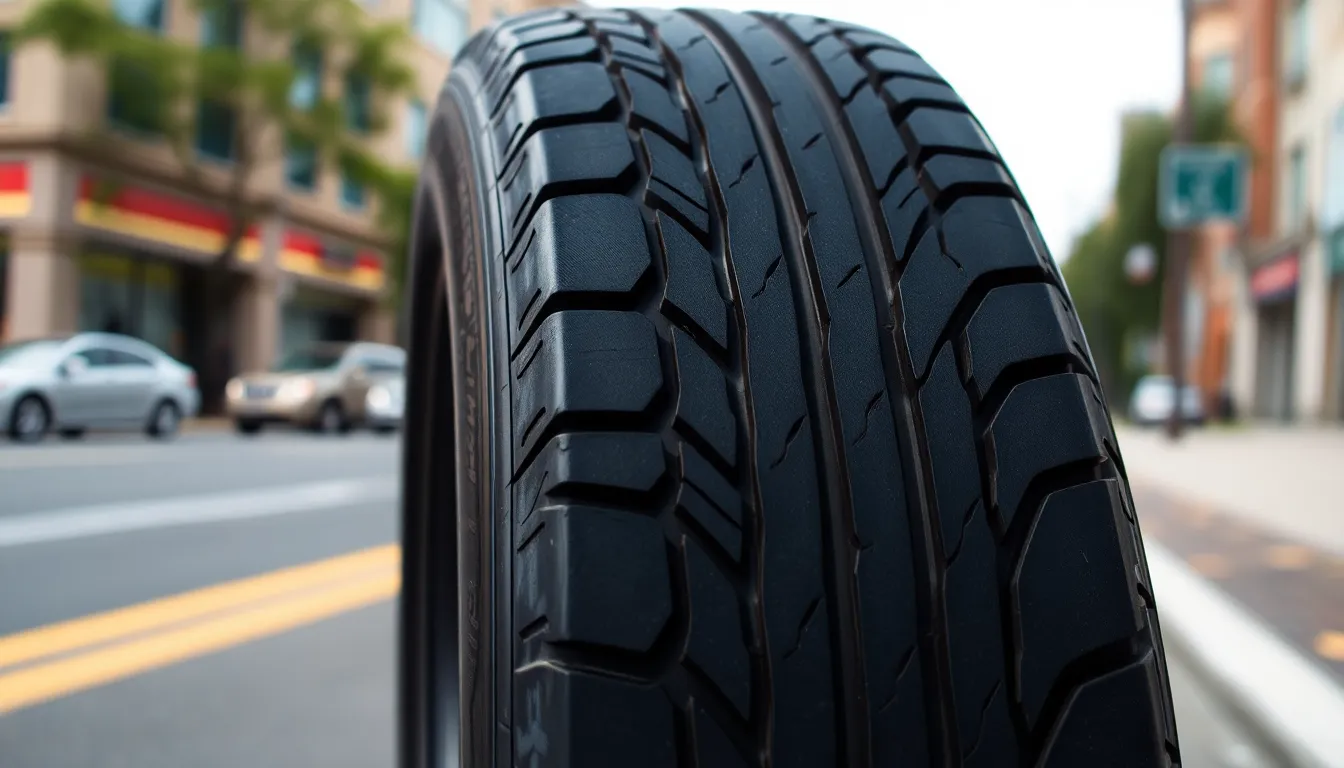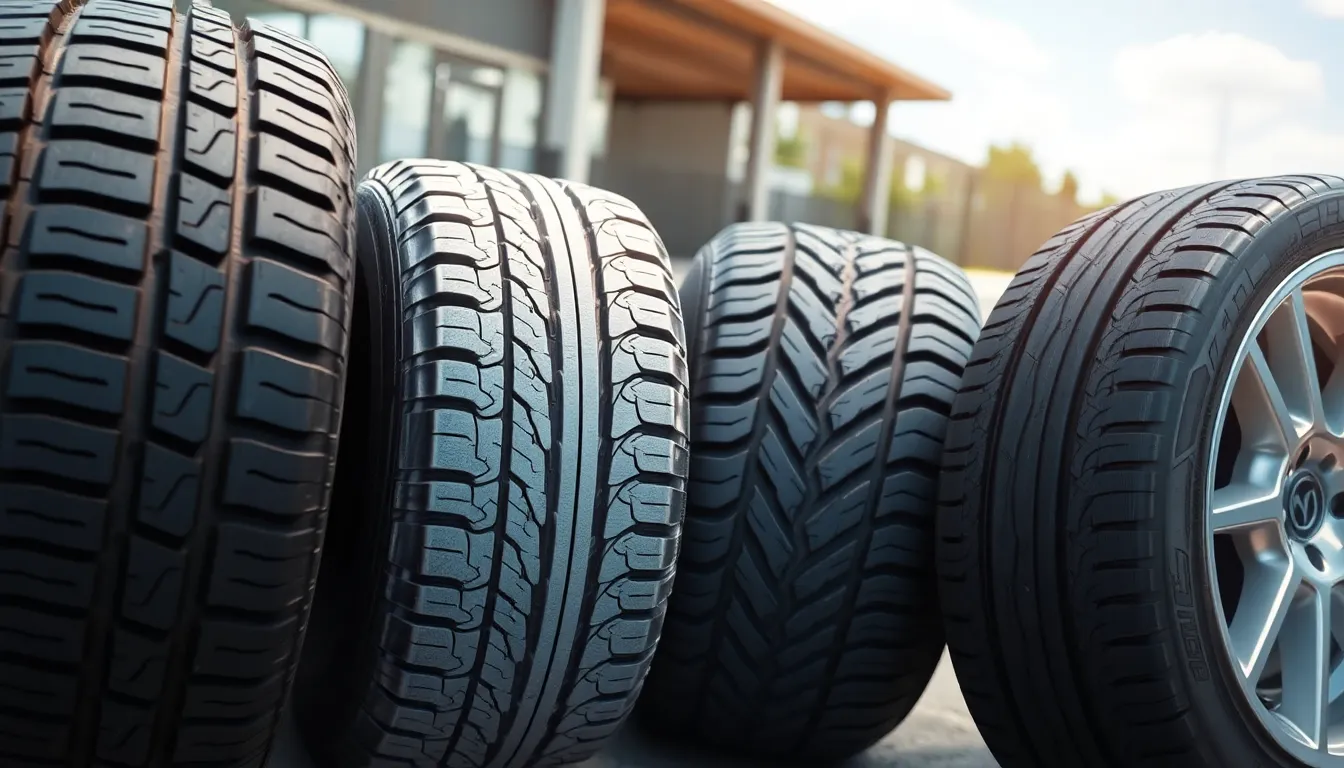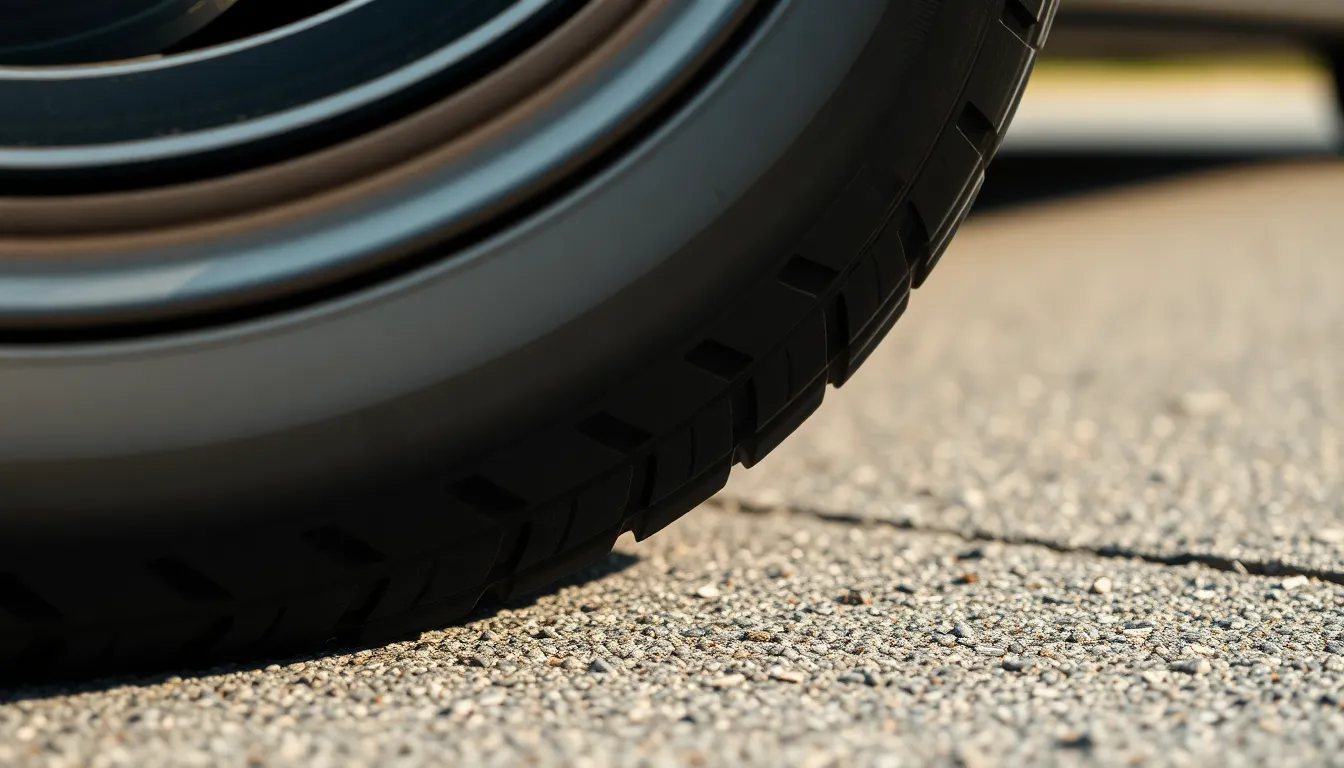When we’re shopping for new tires or getting our vehicle serviced, we often hear the term “passenger tires” thrown around. But what exactly does this classification mean, and why should we care about it when making our next tire purchase?
Passenger tires represent the most common type of tire found on everyday vehicles like sedans, coupes, minivans, and smaller SUVs. They’re specifically engineered to deliver the perfect balance of comfort, fuel efficiency, and performance for regular driving conditions. Unlike commercial or specialty tires, passenger tires prioritize a smooth ride and quiet operation that makes our daily commutes more enjoyable.
Understanding what passenger tires mean isn’t just automotive jargon – it’s crucial knowledge that affects our safety, vehicle performance, and wallet. We’ll explore everything from load ratings and speed capabilities to how these tires differ from other categories, helping you make informed decisions for your vehicle’s needs.
What Are Passenger Tires?
Passenger tires represent the standard tire category designed specifically for everyday vehicles including sedans, coupes, hatchbacks, minivans, and crossover SUVs. These tires feature construction patterns optimized for regular driving conditions on paved roads and highways.
Manufacturing specifications for passenger tires emphasize comfort characteristics over heavy-duty performance. Engineers design these tires with softer rubber compounds that reduce road noise and provide smoother rides compared to commercial or light truck tires.
Key characteristics of passenger tires include:
- Tread patterns optimized for wet and dry traction on asphalt surfaces
- Sidewall flexibility that absorbs road imperfections
- Load ratings typically ranging from 1,047 to 2,337 pounds per tire
- Speed ratings from S (112 mph) to Y (186 mph) for standard models
- Fuel efficiency features that reduce rolling resistance
Construction methods for passenger tires use radial designs with steel belts and polyester cord plies. This configuration delivers the precise balance of durability and comfort that daily drivers require.
Weight capacities for passenger tires align with typical vehicle loads including passengers, cargo, and fuel. Most passenger vehicles operate within the 80 to 85 load index range, corresponding to 992 to 1,135 pounds per tire capacity.
Performance expectations center on providing reliable traction during normal weather conditions while maintaining comfortable ride quality. Passenger tires excel in urban environments, suburban streets, and highway driving where extreme off-road capability isn’t necessary.
Key Characteristics of Passenger Tires

Passenger tires incorporate exact engineering features that distinguish them from commercial and specialty tire categories. These characteristics directly influence vehicle performance, safety margins, and driving comfort across various road conditions.
Size and Construction
Size specifications for passenger tires follow standardized alphanumeric codes that indicate width, aspect ratio, and wheel diameter measurements. Construction methods use radial designs featuring steel belt reinforcement layers positioned beneath the tread surface for enhanced durability. Polyester cord plies form the tire’s internal structure, providing flexibility while maintaining structural integrity during cornering and braking maneuvers.
Sidewall construction emphasizes comfort characteristics through engineered flexibility that absorbs road surface irregularities effectively. Manufacturing processes incorporate softer rubber compounds throughout the tire body compared to commercial alternatives. Belt packages typically include two steel belts positioned at opposing angles to reduce tread movement and improve contact patch stability.
Tread Patterns and Designs
Tread designs optimize wet and dry traction performance through strategic groove placement and sipe density distribution. Circumferential grooves channel water away from the contact patch during wet conditions, reducing hydroplaning risks at highway speeds. Lateral grooves provide additional biting edges for enhanced cornering grip on both wet and dry pavement surfaces.
Sipe patterns create microscopic edges that improve traction on slippery surfaces while maintaining tread block stability. Symmetric tread designs allow for tire rotation patterns that promote even wear distribution across all four positions. Asymmetric patterns feature different tread zones optimized for exact performance characteristics like wet handling or noise reduction.
Load Capacity and Speed Ratings
Load capacity ratings for passenger tires range from 1,047 to 2,337 pounds per individual tire, accommodating various vehicle weights and passenger loads. Load index numbers correspond to exact weight thresholds that determine safe carrying capacity under proper inflation pressure. Speed ratings classify maximum sustained velocity capabilities, with S-rated tires handling speeds up to 112 mph and Y-rated versions supporting speeds reaching 186 mph.
| Load Index | Weight Capacity | Speed Rating | Maximum Speed |
|---|---|---|---|
| 91 | 1,356 lbs | S | 112 mph |
| 95 | 1,521 lbs | T | 118 mph |
| 98 | 1,653 lbs | H | 130 mph |
| 102 | 1,874 lbs | V | 149 mph |
| 106 | 2,094 lbs | W | 168 mph |
Construction standards require passenger tires to maintain these ratings under normal operating conditions with proper inflation levels. Rating combinations determine suitability for exact vehicle applications and driving requirements.
Passenger Tires vs Other Tire Types

Passenger tires differ significantly from other tire categories in construction, performance characteristics, and intended applications. Understanding these distinctions helps drivers select appropriate tires for their exact vehicle requirements and driving conditions.
Passenger vs Light Truck Tires
Light truck tires feature reinforced sidewalls and heavier construction compared to passenger tires, enabling them to handle greater loads and more demanding conditions. These tires carry load ratings from 2,205 to 7,385 pounds per tire, substantially exceeding passenger tire capacity ranges of 1,047 to 2,337 pounds. Construction differences include thicker rubber compounds, additional steel belts, and reinforced bead areas that provide enhanced durability for trucks, SUVs, and commercial delivery vehicles.
Tread patterns on light truck tires incorporate deeper grooves and more aggressive designs for improved traction on varied terrain including gravel, dirt, and construction sites. Passenger tires prioritize comfort and fuel efficiency through softer compounds and optimized tread designs for paved surfaces. Speed ratings typically favor passenger tires, with many light truck options limited to S (112 mph) or T (118 mph) ratings compared to passenger tire ranges extending to Y (186 mph) capabilities.
Sidewall markings distinguish these categories through exact designations, with light truck tires displaying “LT” prefixes or suffixes in their size specifications. Cost differences reflect the enhanced construction, with light truck tires commanding 15% to 40% higher prices than comparable passenger tire sizes. Fuel economy impacts vary significantly, as light truck tires create increased rolling resistance that reduces efficiency by 2% to 8% compared to passenger tire performance.
Passenger vs Commercial Tires
Commercial tires exceed both passenger and light truck categories in load capacity, durability, and operational demands. Load ratings for commercial applications range from 4,410 to 14,550 pounds per tire, enabling support for heavy trucks, buses, and industrial equipment. Construction methods incorporate multiple steel belt layers, reinforced casings, and specialized rubber compounds designed for continuous high mileage operation.
Tread depth measurements distinguish commercial tires through 23/32 to 28/32 inch specifications compared to passenger tire depths of 9/32 to 11/32 inches when new. Retreadability represents a key commercial tire advantage, allowing operators to extend tire life through professional retreading processes that reduce replacement costs by 30% to 50%. Passenger tires lack the structural integrity required for retreading applications.
Regulatory requirements mandate exact performance standards for commercial tires including Department of Transportation certifications and compliance with Federal Motor Vehicle Safety Standards. Passenger tires operate under different regulatory frameworks focused on consumer vehicle applications rather than commercial transportation requirements. Maintenance intervals reflect these different applications, with commercial tires requiring inspection every 3,000 to 5,000 miles compared to passenger tire inspection recommendations of 5,000 to 10,000 miles.
Temperature resistance specifications enable commercial tires to operate in extreme conditions with ratings extending to Grade A classifications, while passenger tires typically achieve Grade A or B temperature ratings suitable for normal driving conditions.
Common Types of Passenger Tires

We categorize passenger tires into four primary types based on their seasonal performance characteristics and intended driving conditions. Each category offers distinct advantages for exact weather patterns and driving requirements.
All-Season Tires
All-season tires represent the most popular passenger tire choice for drivers seeking year-round versatility. These tires feature moderate tread depths ranging from 10/32 to 12/32 inches when new and use rubber compounds that remain flexible across temperatures from 20°F to 100°F. Manufacturers design all-season tires with symmetrical or asymmetrical tread patterns that include lateral grooves for water evacuation and moderate siping for light snow traction.
Performance characteristics include dry braking distances of 120-140 feet from 60 mph and wet weather capabilities that maintain traction on roads with standing water up to 2-3mm deep. Load ratings typically span from P-metric 91 (1,356 pounds) to 108 (2,205 pounds) with speed ratings between S (112 mph) and H (130 mph). Tread life expectancy reaches 60,000-80,000 miles under normal driving conditions.
Summer Tires
Summer tires excel in warm weather conditions above 45°F and deliver superior performance on dry and wet pavement. Engineers create these tires with harder rubber compounds that resist heat buildup during high-speed driving and aggressive cornering. Tread patterns feature fewer grooves than all-season variants, maximizing contact patch area for enhanced grip.
Dry braking performance improves by 15-20% compared to all-season tires, with stopping distances from 60 mph measuring 105-115 feet. Wet weather capabilities include hydroplaning resistance at speeds up to 65 mph on roads with 4-5mm water depth. Speed ratings range from H (130 mph) to Y (186 mph), accommodating performance-oriented vehicles. Tread life averages 40,000-50,000 miles due to softer compounds optimized for traction rather than longevity.
Winter Tires
Winter tires dominate cold weather performance below 45°F through specialized rubber formulations and aggressive tread designs. These tires maintain flexibility in temperatures down to -40°F using silica-enhanced compounds and incorporate thousands of sipes for snow and ice traction. Tread depths start at 12/32 to 14/32 inches with directional patterns featuring large shoulder blocks.
Snow traction improves by 25-35% over all-season tires, while ice braking distances decrease by 30-40% in controlled testing. Load ratings mirror all-season specifications but speed ratings typically max out at T (118 mph) due to tread pattern limitations. Installation occurs in complete sets of four tires for optimal vehicle stability, with seasonal storage required during warm months to prevent accelerated wear.
Performance Tires
Performance tires target enthusiast drivers prioritizing handling precision and cornering capabilities over comfort and longevity. Construction features include reinforced sidewalls with higher aspect ratios, ultra-high-performance rubber compounds, and asymmetrical tread patterns with large shoulder blocks. These tires accommodate vehicles with sport suspension systems and higher horsepower outputs.
Lateral acceleration capabilities reach 0.90-1.10g in dry conditions compared to 0.80-0.85g for standard passenger tires. Speed ratings begin at V (149 mph) and extend to Y (186 mph) for ultra-high-performance variants. Cornering response improves through reduced sidewall flex and increased contact patch stability during aggressive maneuvers. Tread life decreases to 25,000-40,000 miles as compounds prioritize grip over durability, requiring more frequent replacement cycles.
How to Identify Passenger Tires

Passenger tire identification relies on exact markings and sizing codes found on every tire sidewall. These standardized indicators provide essential information about tire specifications and compatibility with your vehicle.
Reading Tire Sidewall Markings
Tire sidewalls contain multiple identification elements that distinguish passenger tires from other tire categories. The most prominent marking appears as a “P” prefix before the tire size designation, indicating passenger tire classification under Department of Transportation standards.
Load index numbers appear after the tire size and range from 79 to 109 for passenger applications. These numbers correspond to weight capacities between 959 and 2,271 pounds per tire. Speed rating letters follow the load index, with common passenger tire ratings including:
| Speed Rating | Maximum Speed |
|---|---|
| S | 112 mph |
| T | 118 mph |
| H | 130 mph |
| V | 149 mph |
| W | 168 mph |
| Y | 186 mph |
Manufacturing date codes consist of four digits indicating the week and year of production. DOT compliance markings confirm the tire meets federal safety standards for passenger vehicle use. Treadwear ratings typically range from 300 to 800 for passenger tires, indicating expected longevity under standardized testing conditions.
Understanding P-Metric Sizing
P-metric sizing follows a standardized format that begins with the “P” designation for passenger tires. The complete size appears as P215/60R16 95H, where each element provides exact dimensional and performance information.
Width measurements appear as the first three digits after the “P” and represent tire width in millimeters. Common passenger tire widths range from 175mm to 285mm. Aspect ratio follows the width and expresses sidewall height as a percentage of tire width, with typical passenger ratios between 45 and 70.
Construction type indicators include “R” for radial construction, which represents 99% of modern passenger tires. Wheel diameter measurements appear next and correspond to rim size in inches, ranging from 13 to 22 inches for most passenger applications.
Load capacity and speed ratings complete the P-metric designation. These final elements ensure proper matching between tire capabilities and vehicle requirements for safe operation.
Benefits and Limitations of Passenger Tires

Passenger tires deliver important advantages for everyday driving while maintaining exact limitations that drivers must consider. Comfort stands as the primary benefit, with softer rubber compounds reducing road noise by 15-25% compared to commercial tires. Fuel efficiency improves through optimized rolling resistance, typically increasing gas mileage by 3-7% over light truck alternatives.
Key Benefits of Passenger Tires:
| Benefit Category | Exact Advantage | Performance Metric |
|---|---|---|
| Comfort | Reduced road noise | 15-25% quieter operation |
| Fuel Economy | Lower rolling resistance | 3-7% improved gas mileage |
| Handling | Responsive steering | Enhanced cornering precision |
| Cost | Lower initial price | 20-40% less than truck tires |
| Availability | Wide selection | Available at most retailers |
Responsive handling characteristics make passenger tires excel in urban and highway environments where precise steering matters most. Manufacturing costs remain lower due to simpler construction methods, resulting in purchase prices that average 20-40% less than comparable light truck options. Wide availability ensures easy replacement and competitive pricing across multiple brands and retailers.
Load capacity limitations restrict passenger tires to vehicles weighing less than 10,000 pounds gross vehicle weight rating. Maximum individual tire loads range from 1,047 to 2,337 pounds, making them unsuitable for heavy hauling or commercial applications. Durability constraints become apparent when comparing treadwear ratings, which typically range from 300-700 compared to 500-800+ for truck tires.
Primary Limitations of Passenger Tires:
- Load restrictions prevent hauling heavy trailers or cargo exceeding 2,337 pounds per tire
- Terrain limitations reduce performance on unpaved roads or extreme off-road conditions
- Sidewall flexibility increases susceptibility to damage from potholes or curb impacts
- Temperature sensitivity affects performance in extreme cold below -10°F
- Treadwear rates typically require replacement every 40,000-80,000 miles depending on driving habits
Off-road capability remains minimal due to shallow tread depths averaging 10/32″ to 12/32″ when new. Sidewall construction prioritizes comfort over puncture resistance, making passenger tires more vulnerable to damage from road hazards. Temperature performance varies significantly between tire types, with standard all-season compounds losing flexibility in extreme cold conditions below -10°F.
Replacement frequency increases compared to commercial alternatives, with most passenger tires requiring replacement between 40,000-80,000 miles depending on driving patterns and maintenance practices. Cost per mile calculations often favor passenger tires even though shorter lifespans due to their significantly lower initial purchase prices and improved fuel economy benefits.
Choosing the Right Passenger Tires for Your Vehicle

Selecting appropriate passenger tires starts with understanding your vehicle’s specifications and matching them to the recommended tire size found in your owner’s manual or driver-side door jamb. We examine three critical factors: load index requirements, speed rating needs, and driving pattern characteristics to ensure optimal tire performance.
Vehicle Compatibility Assessment
Tire sizing accuracy prevents safety hazards and performance issues when we verify the correct P-metric dimensions for our exact vehicle model. Standard passenger vehicles require tires that match the manufacturer’s load capacity specifications, typically ranging from 1,047 to 2,337 pounds per tire. Speed ratings must align with our vehicle’s maximum capabilities, with most passenger cars using S-rated (112 mph) through H-rated (130 mph) tires for standard driving conditions.
We check these specifications using the tire information placard located on the driver’s door frame, which displays the exact tire size, load index, and speed rating recommended by the vehicle manufacturer. Aftermarket wheel modifications require professional consultation to ensure proper load distribution and clearance measurements.
Driving Conditions Analysis
Climate patterns in our geographic region determine whether all-season, summer, or winter passenger tires provide the best performance balance for our exact needs. All-season tires serve 85% of passenger vehicle owners who experience moderate temperature variations and mixed weather conditions throughout the year.
Summer tires excel in regions with consistent temperatures above 45°F, offering enhanced dry and wet traction through specialized rubber compounds and tread designs. Winter tires become essential when temperatures regularly drop below 45°F or when snow and ice conditions persist for extended periods.
We evaluate our typical driving routes to determine terrain requirements: urban commuting favors comfort-oriented tires, highway travel benefits from low rolling resistance designs, and mixed driving conditions work best with versatile all-season options.
Performance Priority Selection
Tread life expectations vary significantly across passenger tire categories, with touring tires delivering 60,000 to 80,000 miles while performance tires typically last 25,000 to 40,000 miles due to softer rubber compounds. We prioritize our most important characteristics from this hierarchy: comfort, fuel economy, handling precision, tread longevity, or wet weather traction.
| Tire Category | Expected Mileage | Primary Benefit | Trade-off |
|---|---|---|---|
| Touring | 60,000-80,000 | Comfort & Longevity | Reduced Performance |
| All-Season | 50,000-70,000 | Year-Round Versatility | Compromised Specialization |
| Performance | 25,000-40,000 | Handling Precision | Shorter Lifespan |
| Eco-Friendly | 55,000-75,000 | Fuel Efficiency | Reduced Grip |
Budget considerations influence our tire selection process since premium passenger tires cost $150 to $300 per tire while economy options range from $80 to $150 per tire. Higher-priced tires typically offer advanced tread compounds, improved wet traction technologies, and longer warranty coverage periods.
Installation and Maintenance Planning
Professional installation ensures proper mounting, balancing, and alignment when we replace passenger tires, preventing premature wear patterns and maintaining vehicle safety standards. We schedule tire rotations every 5,000 to 7,500 miles to promote even tread wear across all four positions and maximize overall tire lifespan.
Proper inflation pressure monitoring extends passenger tire life by 25% while improving fuel economy by up to 3% according to the U.S. Department of Energy. We check tire pressure monthly using a reliable gauge and maintain pressures within 2 PSI of manufacturer specifications found on the vehicle placard.
Regular visual inspections help us identify wear indicators, sidewall damage, or embedded objects that compromise tire integrity and require immediate attention from qualified technicians.
Conclusion
Understanding passenger tires empowers us to make smarter decisions that directly impact our driving experience and safety. We’ve explored how these specialized tires differ from other categories and why matching them to our exact needs matters.
The knowledge we’ve gained about load ratings speed capabilities and seasonal variations helps us navigate tire shopping with confidence. We can now identify the right specifications for our vehicles and driving conditions.
Regular maintenance and proper installation remain crucial for maximizing our tire investment. By applying what we’ve learned about passenger tires we’ll enjoy better performance improved safety and greater value from our tire purchases.
Frequently Asked Questions
What are passenger tires and what vehicles use them?
Passenger tires are the most common type of tire designed for everyday vehicles like sedans, coupes, hatchbacks, minivans, and smaller SUVs. They’re specifically engineered for comfort, fuel efficiency, and performance on paved roads during regular driving conditions. These tires feature softer rubber compounds that reduce road noise and provide smoother rides compared to commercial or light truck tires.
What’s the difference between passenger tires and light truck tires?
Passenger tires are built for comfort and fuel efficiency with softer rubber compounds, while light truck tires have stronger construction for heavier loads and tougher conditions. Passenger tires excel on paved roads with better ride quality, whereas light truck tires handle off-road terrain and higher weight capacities but may produce more road noise and have stiffer rides.
What are the four main types of passenger tires?
The four main types are all-season, summer, winter, and performance tires. All-season tires work year-round in moderate climates. Summer tires offer superior dry and wet performance in warm weather. Winter tires provide enhanced traction in snow and ice. Performance tires deliver maximum handling and responsiveness for spirited driving but may sacrifice comfort and longevity.
How do I read passenger tire markings and sizing codes?
Tire markings are found on the sidewall and include size (like P215/60R16), load index (weight capacity), and speed rating (maximum safe speed). The “P” indicates passenger tire, followed by width in millimeters, aspect ratio, construction type (R for radial), and wheel diameter in inches. These specifications must match your vehicle’s requirements for safe operation.
What load capacity do passenger tires typically support?
Passenger tires typically support loads ranging from 1,047 to 2,337 pounds per tire, depending on their load index rating. This capacity is sufficient for most passenger vehicles including sedans, coupes, and smaller SUVs. The specific load rating is indicated by a numerical code on the tire sidewall that corresponds to maximum weight capacity.
How should I choose the right passenger tires for my vehicle?
Choose tires by first checking your vehicle’s specifications for correct size, load index, and speed rating. Consider your driving conditions: all-season for moderate climates, winter for snow/ice, summer for warm weather performance. Factor in your priorities like comfort, fuel efficiency, or performance, and match tire capabilities to your typical driving patterns and local weather conditions.
How much do passenger tires typically cost?
Passenger tire prices vary significantly based on quality and features. Economy tires may start around $50-80 per tire, while premium brands can cost $150-300 or more per tire. Performance and specialty tires often command higher prices. Consider the trade-off between upfront cost and expected mileage, as premium tires typically offer better durability and longer tread life.
How can I extend the life of my passenger tires?
Extend tire life through regular maintenance including proper inflation pressure checks, tire rotations every 5,000-7,500 miles, and wheel alignments when needed. Professional installation ensures proper mounting and balancing. Monitor tread depth and replace tires when worn. Avoid aggressive driving, excessive speeds, and overloading your vehicle to maximize tire longevity and performance.

